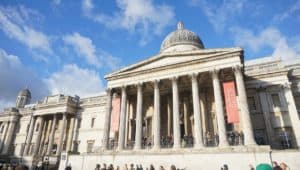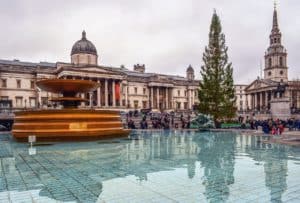Stories Retold: The Dark Side of Fairytales Unveiled

Updated On: April 06, 2024 by Noha Basiouny
Fairytales have long been a staple of cultural expression, capturing the imaginations of children and adults alike with tales of whimsy and wonder. However, beneath the magical veneer of enchanted forests and heroic quests lies a darker underbelly, often sanitised through the ages to suit a more delicate audience. It is within these shadowy recesses that fairytale retellings have begun to explore, embracing and reflecting upon the complexities and moral grey areas originally present in these storied narratives.
These retellings tap into the dark side of fairytales, weaving contemporary issues and mature themes throughout the fabric of timeless stories. This evolution in literature serves not only as a homage to the power of these narratives but also breathes new life into them for a modern generation while retaining their intrinsic cultural value. Through darker retellings, these familiar tales confront complex psychological elements and social challenges, reflecting our changing society and the ever-evolving class dynamics within it.
Table of Contents
Historical Context of Fairytales
Fairytales have been a cornerstone of cultural heritage, reflecting the mores and challenges of the times in which they were told. We’ll explore the origins and evolution through key figures and their contributions to the storied tradition.
Grimm Brothers and Charles Perrault
The Grimm Brothers, Jacob and Wilhelm, compiled an anthology of German folktales in the 19th century, aiming to preserve their cultural value. Their work, Nursery and Household Tales, includes a vast collection of myths and legends that have often been sanitised over time for a younger audience. Meanwhile, Charles Perrault, a 17th-century French author, is credited with introducing many fairytales to the literary cannon, which includes stories like “Cinderella” and “Sleeping Beauty”. His tales have been noted for their moral lessons and courtly context.
Fairytales and Cultural Transmission
Fairytales often serve as vehicles for cultural transmission, encapsulating the beliefs, values, and experiences of a society. They functioned as both educational tools and entertainment. As these stories passed orally from generation to generation, they were moulded by the societal context, reflecting everything from social hierarchies to moral dilemmas. The cultural significance of these tales is underscored by their persistent retelling, in which the underlying myths and folktales adapt while maintaining a connection to their origins.
Evolution of Fairytales in Literature
We explore the journey of fairytales as they have transitioned from the spoken word to captivating literary works and have undergone significant transformation in modern retellings.
From Oral Traditions to Written Works
Initially, fairytales were part of an oral tradition, told and retold through generations. These folk tales served as a means to impart lessons and morals. As they made their way into written form, many were collected in anthologies by authors such as the Grimm Brothers. The very act of recording these stories as written works marked a seminal moment in the history of literature, preserving the fantasy elements and magical worlds of these tales.
Modern Fairytale Retellings
Today’s adaptations often reflect a contemporaneous sensibility that connects with current audiences. Writers reimagine classic fairytales with a darker twist, thus creating a collection of stories that resonate on a more profound level. Modern retellings, found in both books and across various media, dig into the complex emotions and societal issues that traditional versions might not have explored, thus presenting these beloved tales with newfound depth and relevance for today’s readers.
Major Themes in Dark Fairytale Retellings
When we encounter dark fairytale retellings, they compel us to grapple with profound and often uncomfortable themes. They reinterpret the classics we thought we knew, revealing the complexities of good and evil and the fluidity of identity.
Good vs. Evil Dynamics
“Good vs. Evil” is reframed in these retellings, blurring the simplicity of this binary. Consider the evil queen, once a staple villain, now frequently portrayed with nuanced motivations, her malevolence a reflection of societal pressures or personal tragedies. It is this war within characters, rather than between them, that is often at heart.
Transformation and Identity
We delve into the theme of transformation and identity, where characters’ metamorphoses often signify deeper changes. Fairytales explore how individuals encounter and adapt to the forces of magic, race, and imagination. Take a changeling in a retelling of Sleeping Beauty; the journey isn’t just about the curse but her struggle to grasp her identity amidst the fae and humans, revealing our inherent need to understand ourselves and our heritage.
Psychological Elements in Retellings

In exploring the psychological elements present in retellings of fairytales, we uncover deeper meanings and complex character dynamics that have emerged through the reimagination of these stories.
Archetypes and Character Analysis
When analysing the archetypes in retold fairytales, the stepmother often represents a complex figure of authority and envy, challenging the protagonist’s journey towards maturity. This character is not merely a villain; she embodies real psychological dilemmas related to family dynamics and acceptance. Similarly, the crown prince frequently serves as an archetype of idealised nobility and rescue, yet modern retellings might expose the pressures of such expectations, exploring the prince’s internal struggle between duty and personal desire.
Horror and the Uncanny
Horror elements and the uncanny are skilfully woven into fairytales to evoke a visceral reaction. The transformation of a man into a beast taps into our deep-rooted fears of the unknown and the loss of humanity. It serves as a stark metaphor for inner turmoil and the duality of man’s nature. Witchcraft in retellings can be used to explore the dark side of power and knowledge, often blurring the line between reality and the supernatural, and opening a dialogue on societal fears and the psychological impact of feeling ‘othered’.
Influence of Fairytales on Popular Culture
Fairytales have woven their way into the fabric of popular culture, significantly influencing various forms of artistic expression, from film and books to graphic novels and theatre.
Film and Television Adaptations
In film and television, fairytales have undergone a creative transformation, often emerging with a twist that reflects contemporary values or darker undercurrents. These adaptations illustrate how timeless stories continue to captivate audiences. For instance, the romance of classic tales like “Cinderella” or “Snow White” has been reimagined in countless movies, showcasing the universal appeal of love triumphing over adversity. On the flip side, villains and darker themes from age-old narratives have been expanded upon, bringing depth and complexity to the silver screen.
Impact on Literature and Entertainment
Within literature and entertainment, the influence of fairytales is evident in genres ranging from romance to science fiction. Authors of graphic novels have found inspiration in these narratives, often casting them in a more mature and complex light than their traditional counterparts. The concept of an adaptation has also stretched into science fiction, where familiar stories are retooled with futuristic settings or technological spins, illustrating the versatility and enduring relevance of fairytales in literature.
Character Studies in Retold Fairytales
When examining retold fairytales, it’s crucial to explore the depths and edges of the main characters, who often undergo significant changes from their original portrayals. We notice a darker and more complex exploration of personas, making the narratives richer and more compelling.
Protagonists and Their Journeys
Protagonists in retold fairytales frequently embark on much more challenging and morally complex paths than their “happily-ever-after” originals. Take Snow White; she’s no longer just a fair maiden awaiting rescue, but has evolved into a leader fighting against injustices in her kingdom.
Snow White:
- Journey: Transformed from a passive character into a more active and self-reliant figure.
Cinderella:
- Journey: Often portrayed as an oppressed young woman who rises against unfair societal norms.
Beauty and the Beast’s Belle:
- Journey: Belle’s love story may delve deeper into themes of acceptance and the true nature of beauty.
Rapunzel:
- Character Growth: Far beyond just her long hair, Rapunzel often exhibits greater autonomy and strength.
In these retellings, Sleeping Beauty might not just awaken with a kiss but could rise as the queen of her own narrative, grappling with the aftermath of her slumber.
Antagonists and Their Motivations
Antagonists are not merely evil beings; their motivations are frequently explored in depth, providing a back story that invokes both empathy and revulsion.
The Evil Queen:
- Motivation: Jealousy and a desire for power beyond mere vanity.
The Little Mermaid’s Sea Witch:
- Motivation: A complex character with desires and schemes rooted in a world as deep as the ocean.
By delving into the minds and motivations of these adversaries, we gain a clearer understanding of the dualities present within all the characters. This approach paints a picture that humanises the antagonists and adds shades of grey to their black-and-white depictions.
Our examinations reveal protagonists who reflect resilience and growth, while antagonists display motivations that mirror the multifaceted nature of humanity itself.
The Role of Setting in Fairytale Retellings
In fairytale retellings, we see how the backdrop becomes a character in its own right, shaping the narrative and imbuing it with depth.
Enchanted Kingdoms and Distant Lands
Enchanted kingdoms often serve as the stage for fairytale retellings, with castles shrouded in thorns or hidden deep within forests. These settings are not merely backdrops; they are integral to the story’s atmosphere and plot. The Sea plays a dynamic role in this landscape, offering a canvas for transformation or representing the uncharted territory of our characters’ journeys. Think of the tempestuous waters guarding a kingdom’s secrets or the serene waves that speak of impending change.
Nature as a Narrative Device
In the retelling of tales, Nature becomes a powerful narrative device. We find that in the depths of winter, every snowflake can tell a story, and the relentless cold can become either a foe to our protagonists or an old friend offering guidance. The whispering woods are not just trees but guardians of ancient wisdom—here, Baba Yaga’s hut may stand on its chicken legs, challenging those who dare approach. Mirrors, frozen lakes reflecting the stark reality or windows to a character’s soul, bend reality to the will of the narrative, revealing truth or spawning deceit.
By exploring enchanted settings, our retellings find new voices—mirrors may not only show us who is the fairest but might question the nature of beauty itself. Whether through the forests that disguise our fears or the enchanted realms that reflect our deepest desires, we realise the full capacity of setting to transform the familiar into the extraordinary.
Representation and Diversity in Modern Retellings
In recent retellings of fairytales, there’s a notable shift toward including a more diverse range of characters and themes that aim to reflect and honour the varied experiences of our global audience. These stories are more inclusive, often highlighting characters of colour, disabled individuals, and embracing narratives that cross cultural lines.
Breaking Stereotypes
We notice that modern retellings are dismantling the conventional roles and traits often associated with fairytale characters. Characters of colour are stepping into roles traditionally not represented by them, challenging the expected norms. Young Adult (YA) literature is particularly bold in this respect, delivering strong, non-conformist characters that resonate with an audience seeking more relatable heroes and heroines. The realm of Adult fiction is not far behind, weaving through its narratives a rich tapestry of complex, multifaceted characters from different backgrounds.
Inclusive Narratives
Our Middle Grade tales have not only become adventures of fantasy but also journeys in understanding, as they include disabled characters, offering narratives that celebrate abilities in new lights. Inclusivity extends to not just physical, but emotional and cultural ranges, telling stories that resonate with a diverse audience, making room for everyone at the round table of fairytale wonder. The characters depicted in these stories aim to reflect a spectrum of lives and experiences, allowing readers from all walks of life to see themselves in the magic of the tales.
The Craft of Retelling Fairytales
In the intricate process of breathing new life into classic fairytales, careful craftsmanship is key. We explore how original narratives are woven into contemporary lore, revealing the darker layers hidden within these timeless tales.
From Imagination to the Page

At the heart of retelling fairytales lies the vibrant tapestry of imagination. Our first task is to deconstruct familiar stories, like the tale of Cinderella, and reimagine the characters into modern contexts. We consider questions like what motivates Cinder’s stepmother in today’s world or how her fairy godmother might operate in a bustling, urban landscape. The process involves taking the core themes and repurposing them to resonate with current readers, often adding new dimensions to these legendary figures.
This transformation from old to new retains the storyline’s essence, while pencils sketch out bolder, more complex personas. We mould tales until they are ready to captivate the modern reader’s imagination, daring to expose the shadowy veins that run beneath the original.
The Editor’s Role
Once our writers have spun the initial threads of these retold fables into existence, our editors step in to refine the raw material. Their role is pivotal; they boldly shape the narrative’s flow, ensuring coherence and emotional impact. Editors act as alchemists, mixing the ingredients of language, character arcs, and thematic undercurrents with a professional touch to stabilise the enchantment that begins on the writing desk.
The process is meticulous as they sift through each line for consistency and clarity, preserving the story’s integrity while enhancing its depth. Through this collaboration, retellings emerge not just as simple tales, but as mirrors reflecting our own world’s nuances and shades.
Prominent Authors of Fairytale Retellings
In exploring the landscape of reimagined fairytales, we come across a cadre of authors who have transported these age-old narratives into new and often darker realms. Their works probe the psychological depths and offer modern-day relevance.
Contemporary Writers and Their Contributions
-
Angela Carter: Known for her seminal collection ‘The Bloody Chamber,’ which offers a subversive and sensual spin on traditional tales. Her stories often delve into dark themes and feminist interpretations.
-
Margaret Kingsbury: While contributions to the genre include a variety of perspectives, her pieces often explore unique takes on the fairytale form, bringing voices to the fore that were previously unheard in typical retellings.
-
Robin McKinley: Her retellings of classics such as ‘Beauty‘ and ‘Rose Daughter’ have brought her critical acclaim. McKinley’s works stand out for their rich character development and intricate worlds.
-
Sarah J. Maas: With the ‘A Court of Thorns and Roses’ series, she has woven a tapestry of fairytale inspirations into an epic fantasy saga that has captivated readers across the globe.
-
Juliet Marillier: Her work often draws from folklore and fairytales, crafting them into historical fantasy narratives with deep human connections, as seen in ‘Daughter of the Forest’.
-
Marissa Meyer: Her futuristic ‘The Lunar Chronicles’ series is applauded for retooling classic fairytales like ‘Cinderella’ and ‘Little Red Riding Hood’ into a compelling sci-fi universe.
We observe that through their compelling narratives, these authors have enriched the fairytale genre, infusing it with complexity and resonance that speaks eloquently to contemporary audiences.
Publishing and Promotion of Retold Fairytales
In this section, we explore the dynamic approaches towards marketing and sales strategies specific to retold fairytales, as well as delving into the mechanisms that drive reviews and reader engagement in this niche yet expanding literary category.
Marketing and Sales Strategies
For publishers and authors, the promotion of retold fairytales involves innovative marketing and sales strategies. A bookseller might host themed events that capitalise on the nostalgia and enduring popularity of these familiar stories. Book releases often coincide with interactive sessions in school libraries, where authors may engage directly with younger audiences. Concurrently, online platforms like Goodreads foster anticipation and conversations about these retold stories, allowing potential readers to add the books to their ‘want to read’ shelves, creating a virtual buzz prior to launch.
Reviews and Reader Engagement
Reviews play a crucial role in the success of fairytales reimagined; they often start with early-access reviews from trusted sources like School Library Journal, influencing librarians’ and educators’ choices. Coverage by BuzzFeed News or The Lily can amplify awareness, attracting a broader audience. Reader engagement extends to digital realms, with websites like Goodreads serving as an essential hub for readers to rate and discuss these modern twists on classic tales, echoing the darker or diverse themes that have come to characterise this genre.






